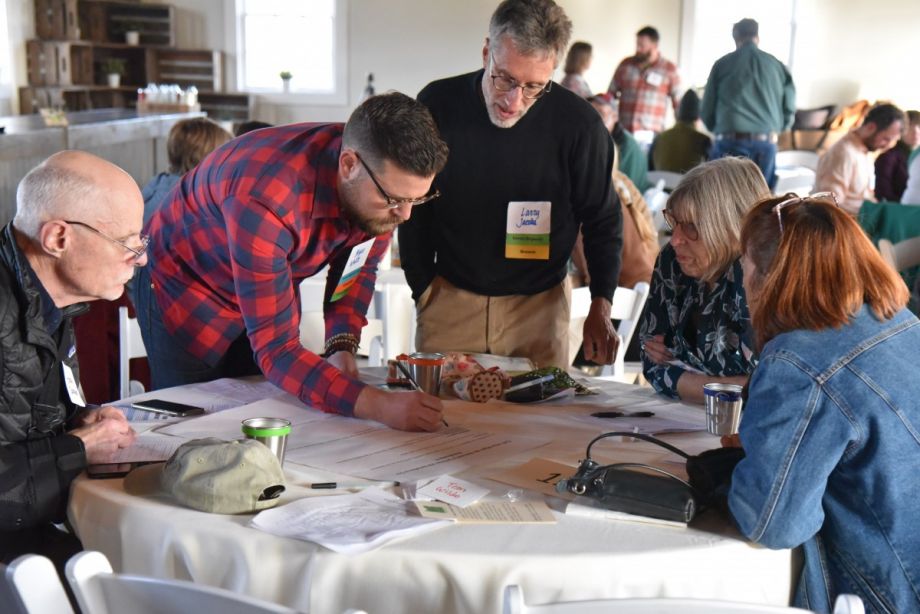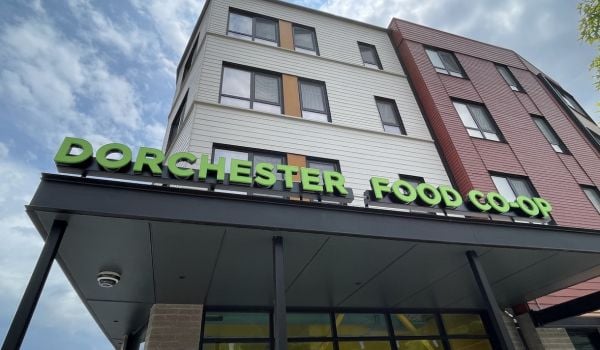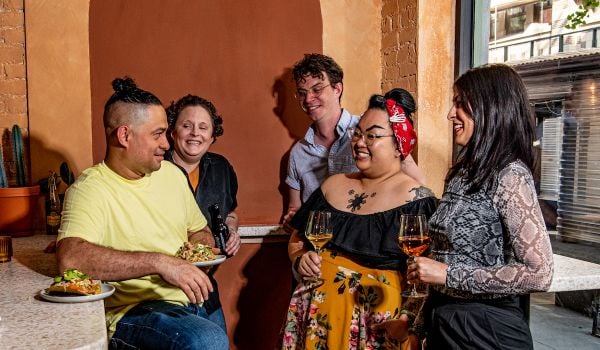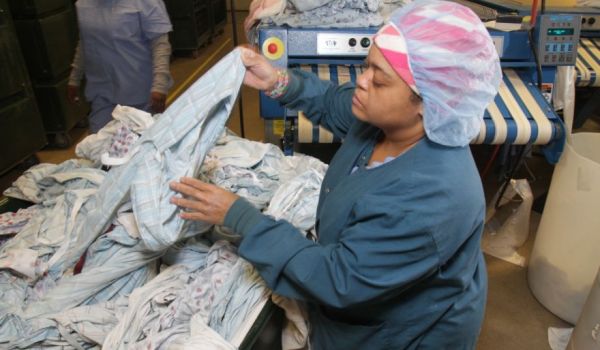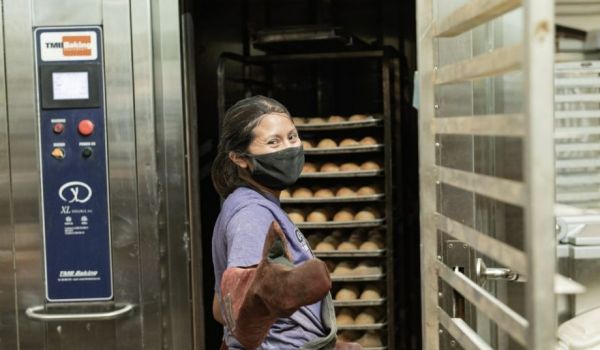Not long ago, Natalie Reitman-White was at a national conference on employee ownership, listening to two of her idols on stage — Full Sail Brewery’s Irene Firmat, and New Belgium Brewery’s Kim Jordan.
“I thought how amazing is this, two female CEO co-founders running beer companies, totally committed to employee-ownership culture and sustainability,” Reitman-White says.
But both of those companies are no longer employee-owned. A private equity firm acquired Full Sail in 2015, and New Belgium just recently announced it accepted an offer to be acquired by a multinational craft brewing company.
The reason isn’t unmitigated greed on the part of the co-founders or employees who benefit financially from the acquisitions — New Belgium disclosed that as a result of the acquisition and buyout of the company’s employee stock ownership plan (ESOP), more than 300 employees are each receiving over $100,000 of retirement money, with some receiving significantly greater amounts. That’s good news for those workers.
The problem is structural. ESOPs are highly regulated by the Internal Revenue Service under the Employee Retirement Income Security Act (ERISA). Those regulations make it nearly impossible for companies to reject lucrative offers from outsiders when the company is majority-owned through an ESOP. Those same regulations also make it challenging to manage cash flow as older employees reach retirement and need to cash out — meaning the company has to buy back their stock.
As vice president for organizational vitality at Organically Grown Company, which was owned by a combination of the farmers in its supply chain and an ESOP, Reitman-White saw the writing on the wall in 2014.
But Organically Grown found a different path, joining a nascent but suddenly growing movement of companies that are transitioning into forms of “steward-ownership.” There’s more than one specific legal form it can take, but steward ownership is analogous to putting land into a community land trust, taking the essential asset (in this case a business) off the market for speculative investors and dedicating it to some higher purpose (in this case the transformation of the food system). Now 100 percent steward-owned, Organically Grown held its first annual stakeholder meeting last month — replacing what had been its annual shareholder meeting.
“I can’t speak for New Belgium, but it’s interesting because for years we were on a parallel journey,” Reitman-White says. “But they chose a different path in terms of their ownership structure and we decided to do this trust structure instead.”
Founded in 1978, Oregon-based Organically Grown Company is the second largest distributor of organic fruits and vegetables in the country, moving a hundred million pounds of organic fruits and vegetables a year. In the fast-growing organic foods market, Organically Grown was ripe for acquisition by a conventional food company — or someone like Amazon. The reason is because of how ESOPs are regulated.
“We’ve set up a system where it’s cool to the employee ownership movement to say, ‘hey, rather than the capitalist owning the stock, let’s get the employees to own the stock,’” Reitman-White says. “I think that’s great, but the logic underneath the system is still the same, which is about maximizing share value.”
While there are sometimes democratic ownership principles and structures built into a company owned by its employees through an ESOP, at its core an ESOP is a retirement plan for employees. They accrue shares based on some set rate as part of their compensation, and then they cash in those shares when they retire — or earlier if they leave the company and choose to transition their retirement earnings into another retirement account.
Being that an ESOP is a retirement program, it falls under the ERISA rules regulated by the IRS. Under those rules, each ESOP has a trustee — an appointed person or committee, who is bound by “fiduciary duty” to maximize the financial value of the ESOP’s shares. That means if the trustee fails to live up to that duty, they can be removed from that position and even sued for damages by employee shareholders.
In the early days of an ESOP, as employees just begin to acquire a stake in the company, it doesn’t have control of the company. But over time those shares add up, and the ESOP eventually may gain a majority stake. It may even be the intent of the company to turn itself over completely to the ESOP over time. New Belgium became 100 percent employee-owned through its ESOP in 2013. In situations where an ESOP owns at least 51 percent of the company, when a private equity firm or larger company comes along and offers to acquire the ESOP-controlled company for a price that’s above the fair market value of the company, that’s an offer the ESOP trustee literally can’t refuse.
Organically Grown Company initiated its ESOP in 2008, and by 2014, as workers continued earning shares, it was approaching 51 percent ownership of the company.
“We were concerned that an acquirer might come to our ESOP trustees and say, ‘I’ll pay you a bunch of money for Organically Grown Company,’ and our ESOP trustees might actually go for the offer because they’re fiduciary-bound to maximize the share value,” Reitman-White says.
What’s more, even if Organically Grown Company could miraculously fend off any acquisition offers, over time the standard ESOP system of the company buying back ownership shares from retiring employees and re-allocating them to current employees could bleed the company dry. That’s because, once again based on ESOP regulations, the company buys back stock from employees based on a price set in part on the company’s financial condition and in part on deals to acquire its competitors in the marketplace.
“The conventional food world is not growing, and the consumer trend is toward organic and natural, so conventional companies are buying organic companies for multiples of their [market value] which are insane,” Reitman-White says. “Some of them are selling for 20 times their earnings — very speculative and strategic buyouts. What it can do is it can really drive your valuation in a speculative way.”
So because of market speculation in the broader organic food industry, every time a retiring employee wanted to cash out their shares, Organically Grown needed to buy back those shares at higher and higher prices. That’s good news for the retiring employee, but it was cash that Organically Grown might otherwise use to invest in things like more sustainable technology or raises for current truck drivers, packers, warehousers and other workers. Reitman didn’t feel good about the cash flow projections looking ahead a few years as the company would need to repurchase more and more ESOP shares from retiring workers. So she sounded the alarm to the board of directors.
Working with a subcommittee of Organically Grown Company’s board, Reitman-White started looking into different ownership structures.
The company had already been through several ownership structures — it started out a nonprofit in 1978, with a mission to promote organic growing practices and educate farmers about them. But it became apparent relatively quickly that the best way to promote those practices would be to give farmers a way to make a living by selling organically grown goods, so it became a farmer-owned agricultural marketing co-op in 1981, similar to the producer co-ops that sell milk, beef, or California raisins. Later, employees also gained the ability to buy into owning the co-op. When Organically Grown shifted to become a year-round distributor, it became necessary to convert into a corporation, still owned by farmers and workers. Then the ESOP came in 2008.
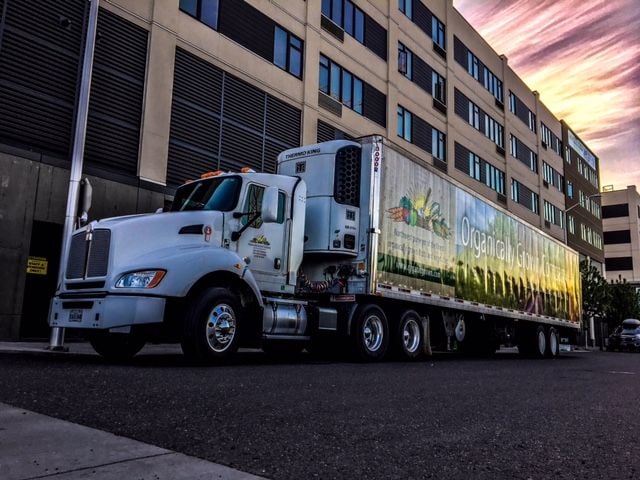
(Photo courtesy Organically Grown)
Going back to any of those previous structures didn’t make sense. Working with lawyers with deep experience in trusts and in the co-op industry, they came up with an idea to create a multi-stakeholder trust. Organically Grown Company’s farmers, employees, investors, its customers and the community would each be given the opportunity to elect a single representative to a “trust protector” committee, which would appoint the company’s board of directors and hold them accountable for delivering on collectively defined goals, including social and environmental goals as well as financial goals.
“We still have to run a good company, so we still have a regular management team and board that’s responsible for creating a good, sound annual operating plan and a budget, keeping the trucks moving,” Reitman-White says. “But instead of having shareholders who control us, we have all of our stakeholders, and they elect our trust protector committee and the trust protector committee is the stand-in for an owner, which is a purpose, not a person. They don’t run the company day-to-day, but they look at the results that the company’s achieving. They’re the ones who the board reports to just like the board would report to shareholders.”
The trust is a separately-incorporated entity, with its governance structure spelled out in its bylaws and a legally binding trust agreement spelling out its relationship with the company.
But figuring all that out was really just the first of many steps. After incorporating the trust, in early 2018 Reitman-White had to lead an effort to convince the existing farmer shareholders and employees to sell all of their shares to the new trust entity. It wasn’t always an easy conversation. People had expectations that they would be able to cash-out someday. They had a lot of pride in the fact they owned the company.
“We had to convince all of our farmers and existing employees who held all these stock certificates saying they owned the company and we’re actually going to buy back the company from you,” Reitman-White says.
In the end, everyone did come around, and more quickly than Reitman-White was expecting. In the original plan, the trust would acquire a majority but not full ownership of the company, and then it would buy back the remainder of voting shares over a number of years. But by this year, the trust was able to achieve 100 percent ownership of the company’s voting shares of stock. That may have had something to do with the fact that, in parallel with creating the trust, Organically Grown also created a non-voting preferred stock program.
It was necessary to create the preferred stock program, modeled off worker-owned cooperatives like Equal Exchange and Namaste Solar, in order to finance the trust’s buyout of existing owners. Outside investors like Purpose Evergreen Capital, Candide Group, individual private investors and several foundations in Oregon with an interest in sustainable food all invested through Organically Grown’s preferred stock program to help finance the conversion to steward ownership. (The company also got a loan from RSF Social Finance to complete the conversion.)
But Reitman-White also says the preferred stock program gave many farmers and employees the opportunity to effectively convert their ESOP shares into preferred stock, speeding up the conversion process.
Purpose Evergreen Capital was created by Purpose Economy, a nonprofit created in 2016 to support conversions to steward ownership in Europe and the U.S. It’s helped 50 companies make the conversion so far, including five in the U.S. Purpose served as the co-lead outside investor, helping to structure the deal and bring the others on board. The nonprofit also helped design the profit-sharing arrangement that gives each of the five stakeholders a slice of the pie.
Organically Grown Company was Purpose Economy’s largest U.S. conversion yet. The nonprofit now has another 15 U.S. companies in its conversion pipeline — some of them as well as others not yet in the pipeline have been reaching out to Purpose Economy because they, too, are seeing the ESOP writing on the wall.
Organically Grown Company has helped establish some best practices with its multi-stakeholder governance structure.
“A lot of the companies we’re working with now, most of them have some kind of multi-stakeholder element,” says Camile Canon, a partner at Purpose Economy. One of Purpose Economy’s clients is a publishing company with authors in its multi-stakeholder governance structure. Another client is a totally new entity — Philadelphia’s Kensington Corridor Trust.
Multi-stakeholder governance might seem farfetched, and in some ways it is. But in many ways, Canon says, their work is really to codify and formalize the informal ways that often closely-held, mission-oriented companies are already operating and making decisions. But the examples of New Belgium and Full Sail, as well as others like Ben & Jerry’s and Etsy have shown even if a company starts out with a mission, even if they are a Certified B Corporation or an employee-owned company, they’re still vulnerable to being sucked back into conventional, “extractive” profit-maximization models. Steward-ownership is a way to prevent that from happening.
“In all of the cases we work with, the governance structures they land on are ultimately a reflection of the culture and how they were governing before,” Canon says. “But now these companies are no longer for sale, profits can no longer be extracted for private wealth, and as a result they can serve as long-term institutions in their community.”
More than 2,000 people, including 250 employees, as well as farmers, retailers, investors and community allies like organic trade association groups and local university agriculture extension program staff were invited to the first stakeholder meeting in Portland last month, where they elected the first trust protector committee and talked through the company’s new governance and profit sharing structures.
“We had a really balanced group, and we purposely did it where we mixed the tables, so all the farmers wouldn’t sit together because they all know each other,” Reitman-White says. “People would have to sit at a table with others representing other stakeholder groups. We’re saying essentially the value of the company is held in the commons for this purpose, and if you participate in the purpose, we invite you to share in the governance and make sure we stay on track to the purpose, and you can also share in a portion of the economic return after we invest back in the purpose.”
EDITOR’S NOTE: We’ve corrected the name of Purpose Evergreen Capital and clarified that the publishing company already has authors in its governance structure.
This article is part of The Bottom Line, a series exploring scalable solutions for problems related to affordability, inclusive economic growth and access to capital. Click here to subscribe to our Bottom Line newsletter.

Oscar is Next City's senior economic justice correspondent. He previously served as Next City’s editor from 2018-2019, and was a Next City Equitable Cities Fellow from 2015-2016. Since 2011, Oscar has covered community development finance, community banking, impact investing, economic development, housing and more for media outlets such as Shelterforce, B Magazine, Impact Alpha and Fast Company.
Follow Oscar .(JavaScript must be enabled to view this email address)



